Lecture
8.1. Traditional Learning: Essence, Merits and Disadvantages
In pedagogy, it is customary to distinguish three main types of education: traditional (or explanatory and illustrative), problem and programmed.
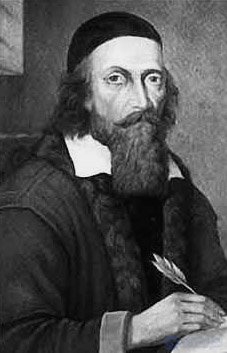 Each of these types has both positive and negative sides. However, there are clear supporters of both types of training. Often they absolutize the merits of their preferred learning and do not fully take into account its shortcomings. As practice shows, the best results can be achieved only with the optimal combination of different types of training. It is possible to draw an analogy with the so-called technology of intensive learning in foreign languages. Their supporters often absolutize the advantages of suggestive (connected with suggestion) ways of memorizing foreign words on a subconscious level, and, as a rule, treat traditional ways of teaching foreign languages as being neglected. But the rules of grammar by suggestion are not mastered. They are mastered by the long-established and now traditional teaching methods.
Each of these types has both positive and negative sides. However, there are clear supporters of both types of training. Often they absolutize the merits of their preferred learning and do not fully take into account its shortcomings. As practice shows, the best results can be achieved only with the optimal combination of different types of training. It is possible to draw an analogy with the so-called technology of intensive learning in foreign languages. Their supporters often absolutize the advantages of suggestive (connected with suggestion) ways of memorizing foreign words on a subconscious level, and, as a rule, treat traditional ways of teaching foreign languages as being neglected. But the rules of grammar by suggestion are not mastered. They are mastered by the long-established and now traditional teaching methods.
Today the most common is the traditional version of learning (see animation). The foundations of this type of training were laid almost four centuries ago by Ya.A. Komensky ("Great didactics") (Komensky Ya.A., 1955).
The term "traditional education" implies, first of all, the class-time organization of education, which was established in the 17th century. on the principles of didactics formulated by Ya.A. Komensky, and still prevailing in schools of the world (Fig. 2).
The undoubted advantage of traditional learning is the ability to transfer a large amount of information in a short time. With such training, students learn knowledge in a finished form without disclosing ways to prove their truth. In addition, it involves the assimilation and reproduction of knowledge and their application in similar situations (Fig. 3). Among the significant shortcomings of this type of training can be called its focus more on memory than on thinking (R. Atkinson, 1980; abstract). This training also contributes little to the development of creative abilities, independence, and activity. The most typical tasks are the following: insert, select, underline, remember, reproduce, solve by example, etc. The learning and cognitive process is more of a reproductive (reproducing) character, as a result of which students develop a reproductive style of cognitive activity. Therefore, it is often called the "school of memory." As practice shows, the volume of the reported information exceeds the capabilities of its assimilation (the contradiction between the substantive and procedural components of the learning process). In addition, there is no opportunity to adapt the pace of learning to the various individual psychological characteristics of students (the contradiction between frontal learning and the individual nature of learning) (see animation). It is necessary to note some features of the formation and development of learning motivation in this type of training.
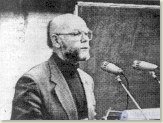 A.A. Verbitsky (Verbitsky AA, 1991) identified the following contradictions of traditional education (Chr. 8.1):
A.A. Verbitsky (Verbitsky AA, 1991) identified the following contradictions of traditional education (Chr. 8.1):
1. The contradiction between the conversion of the content of educational activity (and, consequently, of the student himself) into the past, objectified in the sign systems of the “fundamentals of science”, and the orientation of the subject of the teaching towards the future content of professional practice and the whole culture . The future appears to the student in the form of an abstract, non-motivating prospect for the application of knowledge; therefore, the teaching has no personal meaning for it. Turning into the past, fundamentally known, "cut-out" from the space-time context (past - present - future) deprives the student of the possibility of colliding with the unknown, with a problem situation - a situation generating thinking.
2. The duality of educational information - it acts as part of the culture and at the same time only as a means of its development, personality development. The resolution of this contradiction lies in overcoming the “abstract method of school” and modeling in the educational process such real living conditions and activities that would allow the student to “return” to the culture enriched intellectually, spiritually and practically, and thus be the cause of the development of the culture itself.
3. The contradiction between the integrity of culture and its mastery of the subject through many subject areas - academic disciplines as representatives of sciences. This tradition is fixed by the division of school teachers (into subject teachers) and the cathedral structure of the university. As a result, instead of a holistic picture of the world, the student receives fragments of a “broken mirror”, which he himself is unable to assemble.
4. The contradiction between the way the culture exists as a process and its representation in learning in the form of static sign systems. Learning is presented as a technology for transferring ready-made, alienated from the dynamics of the development of a culture of educational material, taken out of context as the upcoming independent life and work, and from the current needs of the individual. As a result, not only the individual, but also the culture turns out to be outside the processes of development.
5. The contradiction between the social form of the existence of culture and the individual form of its appropriation by students. In traditional pedagogy, it is not allowed, because the student does not join forces with others to produce a joint product - knowledge. Being close to others in a group of students, everyone "dies alone." Moreover, for providing assistance to others the student is punished (by censuring the “hint”), which encourages his individualistic behavior.
The principle of individualization , understood as the isolation of students in individual forms of work and according to individual programs, especially in the computer version, eliminates the possibility of bringing up a creative individuality, which becomes, as we know, not through a robinzonad, but through "another person" in the process of dialogical communication and interaction, where a person performs not only substantive actions, but acts (Unt IE, 1990; abstract).
It is an act (and not an individual objective action) that should be considered as a unit of student activity.
The deed is a socially conditioned and morally rationed action that has both a substantive and sociocultural component, suggesting the response of another person, taking this response into account and correcting one’s own behavior. Such an interchange by actions-actions implies the subordination of the subjects of communication to certain moral principles and norms of relations between people, mutual consideration of their positions, interests and moral values. Under this condition, the gap between training and education is overcome, the problem of the ratio of training and education is eliminated. After all, no matter what a person does, no matter what objective, technological action is performed, he always “acts” as he enters the fabric of culture and social relations.
Many of the above problems are successfully solved in the problem type of training.
Foreign experience. In the history of pedagogy, the questioning of questions to the interlocutor, which causes difficulty in finding answers to them, is known from the conversations of Socrates, the Pythagorean school, and the sophists. The ideas of enhancing the training, mobilization of students' cognitive forces by including them in independent research activities are reflected in the works of J.-J. Rousseau, I.G. Pestalozzi, F.A. Distervega, representatives of the “new upbringing”, who tried to oppose to the dogmatic memorization of ready-made knowledge “active” teaching methods.
All of the above methods B.E. Raikov, by virtue of their common nature, was replaced by the term "research method". The research method of teaching, which intensified the practical activity of students, became a kind of antipode of the traditional method. Its use in schools created an atmosphere of enthusiasm for learning, giving students the joy of self-reliance. 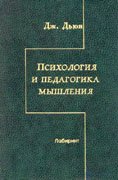 search and discovery and, most importantly, ensured the development of children's cognitive independence, their creative activity. The use of research teaching method as a universal in the early 30s. XX century. It was considered erroneous. It was proposed to build training for the formation of a system of knowledge that does not violate the logic of the subject. However, the massive use of illustrative learning, dogmatic learning did not contribute to the development of school education. Began the search for ways to enhance the educational process. A certain influence on the development of the theory of problem-based learning in this period was exerted by the research of psychologists (S.L. Rubinstein), who substantiated the dependence of human mental activity on problem solving, and the concept of problem-based learning, established in pedagogy based on a pragmatic understanding of thinking.
search and discovery and, most importantly, ensured the development of children's cognitive independence, their creative activity. The use of research teaching method as a universal in the early 30s. XX century. It was considered erroneous. It was proposed to build training for the formation of a system of knowledge that does not violate the logic of the subject. However, the massive use of illustrative learning, dogmatic learning did not contribute to the development of school education. Began the search for ways to enhance the educational process. A certain influence on the development of the theory of problem-based learning in this period was exerted by the research of psychologists (S.L. Rubinstein), who substantiated the dependence of human mental activity on problem solving, and the concept of problem-based learning, established in pedagogy based on a pragmatic understanding of thinking.
In American pedagogy at the beginning of the 20th century. There are two main concepts of problem-based learning. J. Dewey proposed to replace all types and forms of education with the independent teaching of schoolchildren by way of solving problems, and the emphasis was placed on their educational and practical form (Dewey J., 1999; abstract). The essence of the second concept is the mechanical transfer of the conclusions of psychology to the learning process. V. Burton (Burton V., 1934) believed that learning is “acquiring new reactions or changing old ones” and reduced the learning process to simple and complex reactions, without taking into account the influence on the development of a student’s thinking environment and upbringing conditions.
Starting his experiments in one of the Chicago schools in 1895, J. Dewey emphasized the development of his own students' activity. Soon he became convinced that learning that was built taking into account the interests of schoolchildren and was related to their vital needs gave much better results than verbal (verbal, book) learning based on memorizing knowledge. The main contribution of J. Dewey to the theory of learning is the concept of "full act of thinking" developed by him. According to the author’s philosophical and psychological views, a person begins to think when he is confronted with difficulties, the overcoming of which is important for him.
Properly constructed training, according to J. Dewey, should be problematic. At the same time, the problems posed to the students themselves are fundamentally different from the proposed traditional learning tasks - “imaginary problems”, which have low educational and pedagogical value and most often lag far behind what students are interested in.
Compared with the traditional system, J. Dewey proposed bold innovations, unexpected solutions. The place of “book studies” was taken up by the principle of active learning, which is based on the student’s own cognitive activity. The place of the active teacher was taken by the assistant teacher, who does not impose either content or working methods on students, but only helps to overcome difficulties when the students themselves turn to him for help. Instead of a common for all stable curriculum, approximate programs were introduced, the content of which was determined by the teacher only in the most general terms. The place of the oral and written word was taken by theoretical and practical classes, in which independent research work of students was carried out.
The school system, based on the acquisition and assimilation of knowledge, he opposed learning "by doing", i.e. such that all knowledge was extracted from the practical initiative and personal experience of the child. In schools that worked on the J. Dewey system, there was no permanent program with a consistent system of subjects studied, but only the knowledge necessary for the life experience of students was selected. According to the scientist, the student should engage in those activities that allowed civilization to reach the modern level. Therefore, attention should be concentrated on constructive classes: to teach children to cook, sew, attach to needlework, etc. Around these utilitarian knowledge and skills is concentrated information of a more general nature.
J. Dewey adhered to the so-called pedocentric theory and teaching methodology. According to her, the role of the teacher in the processes of training and education is reduced mainly to the guidance of amateur students and the awakening of their curiosity. In the technique of J. Dewey, along with labor processes, a large place was occupied by games, improvisations, excursions, amateur performances, housekeeping. He contrasted the development of student discipline with the development of their individuality.
In labor school labor, according to Dewey, is the focus of all educational work. Carrying out various types of work and acquiring the necessary knowledge for the work, children thereby prepare for the life ahead.
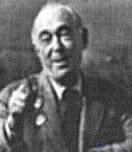
 J. Dewey's pedocentric concept had a great influence on the general character of the educational work of schools in the United States and some other countries, in particular the Soviet school of the 1920s, which found expression in the so-called comprehensive programs and in the project method.
J. Dewey's pedocentric concept had a great influence on the general character of the educational work of schools in the United States and some other countries, in particular the Soviet school of the 1920s, which found expression in the so-called comprehensive programs and in the project method.
The work of the American psychologist J. Bruner (Bruner J., 1977; abstract) had the greatest influence on the development of the modern concept of problem-based learning. It is based on the ideas of structuring educational material and the dominant role of intuitive thinking in the process of assimilating new knowledge as the basis of heuristic thinking. Bruner focused on the knowledge structure, which should include all the necessary elements of the knowledge system and determine the direction of development of the student.
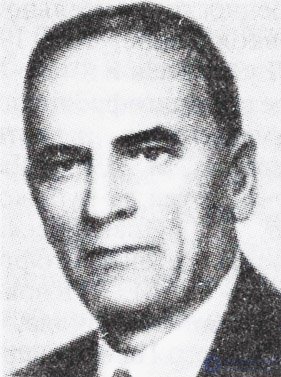 In the 70s-80s XX century. The concept of problem-based learning by the English psychologist E. de Bono, which focuses on six levels of thinking, has become popular.
In the 70s-80s XX century. The concept of problem-based learning by the English psychologist E. de Bono, which focuses on six levels of thinking, has become popular.
In the development of the theory of problem-based learning, teachers from Poland, Bulgaria, Germany and other countries have achieved certain results. Так, польский педагог В. Оконь (Оконь В., 1968, 1990) исследовал условия возникновения проблемных ситуаций на материале различных учебных предметов и совместно с Ч. Куписевичем доказал преимущество обучения путем решения проблем для развития умственных способностей учащихся. Проблемное обучение понималось польскими педагогами лишь как один из методов обучения. Болгарские педагоги (И. Петков, М. Марков) рассматривали главным образом вопросы прикладного характера, уделяя основное внимание организации проблемного обучения в начальной школе.
 В результате отечественная массовая школа не накопила практики использования методов, специально направленных на развитие мышления. Большое значение для становления теории проблемного обучения имели работы психологов, сделавших вывод о том, что умственное развитие характеризуется не только объемом и качеством усвоенных знаний, но и структурой мыслительных процессов, системой логических операций и умственных действий, которыми владеет ученик (С.Л. Рубинштейн, Н.А. Менчинская, Т.В. Кудрявцев), и раскрывших роль проблемной ситуации в мышлении и обучения (Матюшкин А.М., 1972; аннотация).
В результате отечественная массовая школа не накопила практики использования методов, специально направленных на развитие мышления. Большое значение для становления теории проблемного обучения имели работы психологов, сделавших вывод о том, что умственное развитие характеризуется не только объемом и качеством усвоенных знаний, но и структурой мыслительных процессов, системой логических операций и умственных действий, которыми владеет ученик (С.Л. Рубинштейн, Н.А. Менчинская, Т.В. Кудрявцев), и раскрывших роль проблемной ситуации в мышлении и обучения (Матюшкин А.М., 1972; аннотация).
The experience of using individual elements of problem-based learning at school was investigated by M.I. Makhmutov, I.Ya. Lerner, N.G. Dairy, D.V. Vilkeev (see Ch. 8.2). The starting points for the development of the theory of problem-based learning were the provisions of the theory of activity (S.L. Rubinstein, L.S. Vygotsky, A.N. Leontiev, V.V. Davydov). Problem in learning was considered as one of the patterns of mental activity of students. Developed ways to create problem situations in various educational subjects and found the criteria for assessing the complexity of problematic cognitive tasks. Gradually spreading, problem-based education from a secondary school penetrated into secondary and higher vocational schools. Improved methods of problem-based learning, in which improvisation becomes an important component,especially when solving problems of a communicative nature (Kulyutkin Yu.N., 1970). A system of teaching methods emerged in which the creation of a problem situation by a teacher and the solving of problems by students became the main condition for the development of their thinking. In this system, there are general methods (monological, exponential, dialogic, heuristic, research, programmed, algorithmic) and binary - the rules of interaction between the teacher and the students. On the basis of this system of methods, some new pedagogical technologies have been developed (VF Shatalov, PM Erdniev, GA Rudik, and others).research, programmed, algorithmic) and binary - the rules of interaction between teacher and students. On the basis of this system of methods, some new pedagogical technologies have been developed (VF Shatalov, PM Erdniev, GA Rudik, and others).research, programmed, algorithmic) and binary - the rules of interaction between teacher and students. On the basis of this system of methods, some new pedagogical technologies have been developed (VF Shatalov, PM Erdniev, GA Rudik, and others).
Сегодня наиболее перспективным и соответствующим социально-экономическим, а также и психологическим условиям является проблемное обучение.
 В чем сущность проблемного обучения? Его трактуют и как принцип обучения, и как новый тип учебного процесса, и как метод обучения, и как новую дидактическую систему.
В чем сущность проблемного обучения? Его трактуют и как принцип обучения, и как новый тип учебного процесса, и как метод обучения, и как новую дидактическую систему.
Под проблемным обучением обычно понимается такая организация учебных занятий, которая предполагает создание под руководством учителя проблемных ситуаций и активную самостоятельную деятельность учащихся по их разрешению (см. рис. 5).
Проблемное обучение заключается в создании проблемных ситуаций, в осознании, принятии и разрешении этих ситуаций в ходе совместной деятельности обучающихся и учителя, при оптимальной самостоятельности первых и под общим направляющим руководством последнего, а также в овладении учащимися в процессе такой деятельности обобщенными знаниями и общими принципами решения проблемных задач. Принцип проблемности сближает между собой процесс обучения с процессами познания, исследования, творческого мышления (Махмутов М.И., 1975; аннотация).
Проблемное обучение (как и любое другое обучение) может способствовать реализации двух целей:
Первая цель — сформировать у учащихся необходимую систему знаний, умений и навыков .
Вторая цель — достигнуть высокого уровня развития школьников, развития способности к самообучению, самообразованию .
Обе эти задачи могут быть реализованы с большим успехом именно в процессе проблемного обучения, поскольку усвоение учебного материала происходит в ходе активной поисковой деятельности учащихся, в процессе решения ими системы проблемно-познавательных задач.
Важно отметить еще одну из важных целей проблемного обучения - сформировать особый стиль умственной деятельности, исследовательскую активность и самостоятельность учащихся (Кудрявцев Т.В., 1975. С. 260-261).
 Особенность проблемного обучения заключается в том, что оно стремится максимально использовать данные психологии о тесной взаимосвязи процессов обучения (учения), познания, исследования и мышления. С этой точки зрения, процесс учения должен моделировать процесс продуктивного мышления, центральным звеном которого является возможность открытия, возможность творчества (Пономарев Я.А., 1999; аннотация).
Особенность проблемного обучения заключается в том, что оно стремится максимально использовать данные психологии о тесной взаимосвязи процессов обучения (учения), познания, исследования и мышления. С этой точки зрения, процесс учения должен моделировать процесс продуктивного мышления, центральным звеном которого является возможность открытия, возможность творчества (Пономарев Я.А., 1999; аннотация).
Сущность проблемного обучения сводится к тому, что в процессе обучения в корне изменяется характер и структура познавательной деятельности учащегося, приводящее к развитию творческого потенциала личности учащегося. Главным и характерным признаком проблемного обучения является проблемная ситуация.
 При проблемном обучении учитель создает проблемную ситуацию, направляет учащихся на ее решение, организует поиск решения. Таким образом, учащийся ставится в позицию субъекта своего обучения и как результат у него образуются новые знания, он обладает новыми способами действия. Трудность управления проблемным обучением в том, что возникновение проблемной ситуации - акт индивидуальный, поэтому от учителя требуется использование дифференцированного и индивидуального подхода. Если при традиционном обучении учитель излагает теоретические положения в готовом виде, то при проблемном обучении он подводит школьников к противоречию и предлагает им самим найти способ его решения, сталкивает противоречия практической деятельности, излагает различные точки зрения на один и тот же вопрос (Развитие…, 1991; аннотация). Типичные задания проблемного обучения: рассмотреть явление с различных позиций, провести сравнение, обобщение, сформулировать выводы из ситуации, сопоставить факты, сформулировать самим конкретные вопросы (на обобщение, обоснование, конкретизацию, логику рассуждения) (рис. 6).
При проблемном обучении учитель создает проблемную ситуацию, направляет учащихся на ее решение, организует поиск решения. Таким образом, учащийся ставится в позицию субъекта своего обучения и как результат у него образуются новые знания, он обладает новыми способами действия. Трудность управления проблемным обучением в том, что возникновение проблемной ситуации - акт индивидуальный, поэтому от учителя требуется использование дифференцированного и индивидуального подхода. Если при традиционном обучении учитель излагает теоретические положения в готовом виде, то при проблемном обучении он подводит школьников к противоречию и предлагает им самим найти способ его решения, сталкивает противоречия практической деятельности, излагает различные точки зрения на один и тот же вопрос (Развитие…, 1991; аннотация). Типичные задания проблемного обучения: рассмотреть явление с различных позиций, провести сравнение, обобщение, сформулировать выводы из ситуации, сопоставить факты, сформулировать самим конкретные вопросы (на обобщение, обоснование, конкретизацию, логику рассуждения) (рис. 6).
Consider an example. Учащиеся 6-го класса не знакомы с понятием о видах глагола. Все другие грамматические признаки глагола (число, время, переходность и т.д.) им известны. Учительница обращает внимание учащихся на доску, где разноцветными мелками в два столбика написаны глаголы:
| I | II |
| Наклеивать | Наклеить |
| Прибегать | Прибежать |
| Печь | Bake |
At the first acquaintance with these verbs, students see inconsistencies between species pairs.
Question. What are the grammatical features of the verbs of the first and second columns?
The formulation of the problem clarifies the nature of the difficulty of students arising from the encounter with the problem. Attempts by students to explain the difference in verbs based on the actualization of previously acquired knowledge do not reach the goal. In the future, the connection between the data elements and the target is achieved by analyzing and explaining the data, i.e. The actual language (grammatical) material contained in the examples is analyzed. The purpose (the concept of the types of the verb) is gradually revealed in the course of solving the problem.
As a number of studies have shown, between the search activity of a person and his health (physical, mental) there is a close relationship.
People with a poorly developed need for searching live a less stressful life, their search activity is expressed only by specific vernal situations when it is not possible to satisfy other needs, such as biological ones, for example, the need for safety and daily bread, and social, - for example, the need for prestige. If all the basic desires are satisfied, it is as if one can live in a relaxed and calm way, not striving for anything, and, therefore, not being exposed to the risk of defeat and impairment. Refusal of the search, if the search is not an immediate need, is given painlessly and calmly. However, this prosperity is imaginary and conditional. It is possible only in ideal conditions of complete comfort. Our dynamic world does not provide such conditions to anyone - and this is quite natural, since the accumulation in the society of people with low search activity would inevitably lead to a public regress. And in a world where there is a constant need to search, if only to satisfy primary needs, the lack of a desire to search as such makes existence painful, because you constantly have to make an effort over yourself. The search, without bringing the experience of naturalness and satisfaction, becomes an unpleasant necessity for people with low need for searching and, of course, they are much worse off than people with high need for it. In addition, a person with low activity is worse prepared for encounters with life difficulties and quickly refuses to search for a way out of difficult situations. And although this refusal is subjectively experienced by them not so hard, but objectively the body’s resistance is still decreasing. In one of the countries, the fate of people, whose character and behavior was dominated by a sense of apathy, indifference to life, people with low activity, was traced for a number of years. It turned out that they, on average, die at an earlier age than the people initially active. And they die from causes that are not fatal to others. Let us recall Ilya Oblomov, a man with an extremely low need for searching (from childhood, this need did not develop, for everything was given in finished form). He was quite pleased with life, or rather, with his complete isolation from life, and died at a rather young age for some strange reason.
The constant absence of search activity leads to the fact that the individual is helpless in any encounter with difficulties or even with such situations that in other conditions as difficulties are not perceived. So the low need to find not only makes life fresh and useless, but also does not guarantee health and longevity.
A problem situation characterizes a certain psychological state of a student arising in the process of completing a task for which there are no ready-made tools and which requires the assimilation of new knowledge about the subject, methods or conditions of its implementation. The condition for the emergence of a problem situation is the need to uncover a new attitude, property, or method of action (Gurova LL, 1976; abstract).
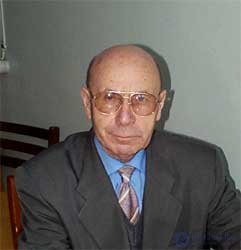
Problem-based learning is aimed at self-searching for learners of new knowledge and methods of action, and also implies a consistent and targeted advancement of cognitive problems to students, resolving which they are actively assimilating new knowledge under the guidance of a teacher. Therefore, it provides a special type of thinking, depth of belief, the strength of learning and their creative application in practice. In addition, it contributes to the formation of the motivation to achieve success, develops the thinking abilities of students (Heckhausen H., 1986; abstract).
Problem-based learning is less applicable than other types of training in the development of practical skills; it takes a lot of time to master the same amount of knowledge compared to other types of training.
Thus, explanatory and illustrative training does not ensure the effective development of students' thinking abilities because it is based on the laws of reproductive thinking, and not creative activity.
Despite the identified shortcomings, today problem-based learning is the most promising. The fact is that with the development of market relations, all the structures of society in one way or another move from the mode of operation (which was more typical for the Soviet period of the country's development) to the mode of development. The driving force behind any development is overcoming the corresponding contradictions. And overcoming these contradictions is always associated with certain abilities, which in psychology are usually called reflexive abilities. They involve the ability to adequately assess the situation, identify the causes of difficulties and problems in the activities (professional, personal), as well as plan and carry out special activities to overcome these difficulties (contradictions). These abilities are among the basic for the modern specialist. They are not transmitted by lectures and stories. They are "grown". This means that the educational process should be organized in such a way as to “cultivate” these abilities with future specialists. Consequently, the educational process should model the process of the emergence and overcoming of contradictions, but on the educational content. These requirements, in our opinion, are most relevant to today's problem-based learning. Ideas of problem-based learning were implemented in systems of developmental learning (Chrest. 8.4)
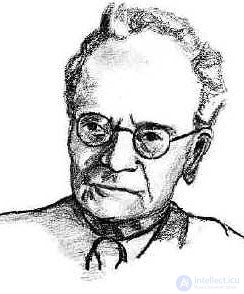 Programmed training is training according to a previously developed program, which provides for the actions of both students and the teacher (or a teaching machine replacing it). The idea of programmed learning was proposed in the 50s. Twentieth century. American psychologist B. Skinner to improve the management of the learning process using the achievements of experimental psychology and technology. Objectively programmed learning reflects, in relation to the field of education, a close combination of science with practice, the transfer of certain human actions to machines, the increasing role of managerial functions in all spheres of social activity. In order to increase the efficiency of managing the process of learning, it is necessary to use the achievements of all the sciences related to this process, and above all cybernetics - the science of general laws of control. Therefore, the development of the ideas of programmed learning turned out to be associated with the achievements of cybernetics, which sets the general requirements for the management of the learning process. The implementation of these requirements in educational programs is based on the data of psychological and pedagogical sciences, which study the specific features of the educational process. However, in developing this type of training, some experts rely on the achievements of psychological science alone (one-sided psychological direction), others only on the experience of cybernetics (one-sided cybernetics). In the practice of teaching, it is a typically empirical direction in which the development of training programs is based on practical experience, and only separate data are taken from cybernetics and psychology.
Programmed training is training according to a previously developed program, which provides for the actions of both students and the teacher (or a teaching machine replacing it). The idea of programmed learning was proposed in the 50s. Twentieth century. American psychologist B. Skinner to improve the management of the learning process using the achievements of experimental psychology and technology. Objectively programmed learning reflects, in relation to the field of education, a close combination of science with practice, the transfer of certain human actions to machines, the increasing role of managerial functions in all spheres of social activity. In order to increase the efficiency of managing the process of learning, it is necessary to use the achievements of all the sciences related to this process, and above all cybernetics - the science of general laws of control. Therefore, the development of the ideas of programmed learning turned out to be associated with the achievements of cybernetics, which sets the general requirements for the management of the learning process. The implementation of these requirements in educational programs is based on the data of psychological and pedagogical sciences, which study the specific features of the educational process. However, in developing this type of training, some experts rely on the achievements of psychological science alone (one-sided psychological direction), others only on the experience of cybernetics (one-sided cybernetics). In the practice of teaching, it is a typically empirical direction in which the development of training programs is based on practical experience, and only separate data are taken from cybernetics and psychology.
The basis of the general theory of programmed teaching is the programming of the process of mastering the material. This approach to learning involves the study of cognitive information in certain doses, which are logically complete, convenient and accessible for holistic perception.
Today, under programmed learning, we mean the controlled assimilation of programmed educational material with the help of a training device (a computer, a programmed textbook, a film simulator, etc.) (Fig. 8). The programmed material is a series of relatively small portions of educational information ("frames", files, "steps"), fed in a certain logical sequence (see Media Library).
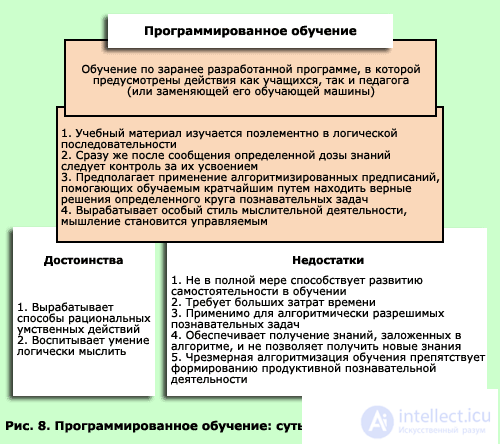
In programmed teaching, teaching is carried out as a clearly controlled process, since the material under study is divided into small, easily digestible doses. They are consistently presented to the student for mastering. After examining each dose, an assimilation check follows. Dose learned - go to the next. This is the “step” of learning: presentation, learning, verification.
Usually, when compiling training programs, from cybernetic requirements, only the need for systematic feedback was taken into account, and from psychological ones, the individualization of the learning process was taken into account. There was no sequence of implementation of a specific model of the learning process. The most well-known concept of B. Skinner, based on the behavioral theory of teaching, according to which there is no significant difference between the teaching of man and the teaching of animals. In accordance with the behaviorist theory, educational programs should solve the problem of obtaining and fixing the correct response. To develop the correct response, the principle of breaking up the process into small steps and the principle of a hint system are used. When the process is broken down, the programmed complex behavior is divided into the simplest elements (steps), each of which the student would be able to do without error. When a hint system is included in the tutorial, the required reaction is first given in finished form (maximum degree of hint), then with the omission of individual elements (decaying hints), at the end of the training a completely independent response is required (removing the hint). An example is the memorization of a poem: first, the quatrain is given completely, then with the omission of one word, two words, and an entire line. At the end of memorization, a student, having received four lines of ellipsis instead of a quatrain, must reproduce the poem independently.
To reinforce the reaction, the principle of immediate reinforcement is used (with the help of verbal encouragement, the submission of a sample to ensure the correctness of the answer, etc.) of each correct step, as well as the principle of multiple repetition of reactions.
Teaching programs built on a behavioral basis are divided into: a) linear, developed by Skinner, and b) branched programs of N. Crowder.
1. Linear system of programmed learning , originally developed by the American psychologist B. Skinner in the early 60s. Twentieth century. based on the behavioral direction in psychology.
According to this system, students go through all the steps of the program being taught in sequence, in the order in which they are given in the program. The tasks in each step are to fill in one or more words with a pass in the information text. After that, the student must verify his decision with the correct one, which was previously closed in some way. If the student’s answer was correct, he should proceed to the next step; если же его ответ не совпадает с правильным, то он должен выполнить задание еще раз. Таким образом, линейная система программированного обучения основана на принципе обучения, предполагающего безошибочное выполнение заданий. Поэтому шаги программы и задания рассчитаны на наиболее слабого ученика. По мысли Б. Скиннера, обучаемый учится, главным образом, выполняя задания, а подтверждение правильности выполнения задания служит подкреплением для стимуляции дальнейшей деятельности обучаемого (см. анимацию).
Линейные программы рассчитаны на безошибочность шагов всех учащихся, т.е. должны соответствовать возможностям наиболее слабых из них. В силу этого коррекция программ не предусмотрена: все учащиеся получают одну и ту же последовательность кадров (заданий) и должны проделать одни и те же шаги, т.е. двигаться по одной и той же линии (отсюда название программ - линейные).
2. Разветвленная программа программированного обучения . Ее основоположником является американский педагог Н. Краудер. В этих программах, получивших широкое распространение, кроме основной программы, рассчитанной на сильных учащихся, предусматриваются дополнительные программы (вспомогательные ветви), на одну из которых направляется ученик в случае затруднений. Разветвленные программы обеспечивают индивидуализацию (адаптацию) обучения не только по темпу продвижения, но и по уровню трудности. Кроме того, эти программы открывают бόльшие возможности для формирования рациональных видов познавательной деятельности, чем линейные, ограничивающие познавательная деятельность в основном восприятием и памятью.
Контрольные задания в шагах этой системы состоят из задачи или вопроса и набора нескольких ответов, в числе которых обычно один правильный, а остальные неверные, содержащие типичные ошибки. Обучаемый должен выбрать из этого набора один ответ. Если он выбрал правильный ответ, то получает подкрепление в виде подтверждения правильности ответа и указание о переходе к следующему шагу программы. Если же он выбрал ошибочный ответ, ему разъясняется сущность допущенной ошибки, и он получает указание вернуться к какому-то из предыдущих шагов программы или же перейти к некоторой подпрограмме.
Кроме этих двух основных систем программированного обучения разработано много других, в той или иной степени использующих линейный или разветвленный принцип или оба эти принципа для построения последовательности шагов обучающей программы.
Общий недостаток программ, построенных на бихевиористской основе, заключается в невозможности управления внутренней, психической деятельностью учащихся, контроль за которой ограничивается регистрацией конечного результата (ответа). С кибернетической точки зрения эти программы осуществляют управление по принципу "черного ящика", что применительно к обучению человека малопродуктивно, т. к. главная цель при обучении состоит в формировании рациональных приемов познавательной деятельности. Это означает, что контролироваться должны не только ответы, но и пути, ведущие к ним. Практика программированного обучения показала непригодность линейных и недостаточную продуктивность разветвленных программ. Дальнейшие усовершенствования обучающих программ в рамках бихевиористской модели обучения не привели к существенному улучшению результатов.
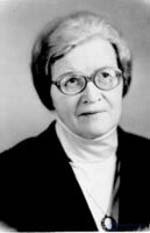 В отечественной науке теоретические основы программированного обучения активно изучались, а также внедрялись достижения на практике в 70-х гг. Twentieth century. Одним из ведущих специалистов является профессор Московского университета Нина Федоровна Талызина (Талызина Н.Ф., 1969; 1975). В отечественном варианте этот тип обучения базируется на так называемой теории поэтапного формирования умственных действий и понятий П.Я. Гальперина (Гальперин П.Я., 1998; аннотация) и теории кибернетики. Реализация программированного обучения предполагает выделение по каждому изучаемому предмету специфических и логических приемов мышления, указания рациональных способов познавательной деятельности в целом. Только после этого возможно составление обучающих программ, которые направлены на формирование этих видов познавательной деятельности, а через них и тех знаний, которые составляют содержание данного учебного предмета.
В отечественной науке теоретические основы программированного обучения активно изучались, а также внедрялись достижения на практике в 70-х гг. Twentieth century. Одним из ведущих специалистов является профессор Московского университета Нина Федоровна Талызина (Талызина Н.Ф., 1969; 1975). В отечественном варианте этот тип обучения базируется на так называемой теории поэтапного формирования умственных действий и понятий П.Я. Гальперина (Гальперин П.Я., 1998; аннотация) и теории кибернетики. Реализация программированного обучения предполагает выделение по каждому изучаемому предмету специфических и логических приемов мышления, указания рациональных способов познавательной деятельности в целом. Только после этого возможно составление обучающих программ, которые направлены на формирование этих видов познавательной деятельности, а через них и тех знаний, которые составляют содержание данного учебного предмета.
Хотя не все эти возражения полностью справедливы, но, несомненно, они имеют под собой определенные основания. Поэтому интерес к программированному обучению в 70-80-е гг. Twentieth century. стал падать и его возрождение произошло в последние годы на базе использования новых поколений компьютерной техники.
Как уже отмечалось, наибольшее распространение различные системы программированного обучения получили в 50-60-х гг. ХХ в., в дальнейшем стали использовать лишь отдельные элементы программированного обучения, главным образом для контроля знаний, консультаций и тренировки навыков. В последние годы идеи программированного обучения стали возрождаться на новой технической основе (ЭВМ, телевизионные системы, микрокомпьютеры и др.) в форме компьютерного, или электронного, обучения. Новая техническая база позволяет почти полностью автоматизировать процесс обучения, строить его как достаточно свободный диалог обучаемого с обучающей системой. Роль учителя в этом случае состоит в основном в разработке, наладке, коррекции и усовершенствовании обучающей программы, а также проведении отдельных элементов безмашинного обучения. Многолетний опыт подтвердил, что программированное обучение, и особенно компьютерное, обеспечивает достаточно высокий уровень не только обучения, но и развития учащихся, вызывает у них неослабевающий интерес.
*******
В педагогике принято выделять три основных типа обучения: традиционное (или объяснительно-иллюстративное), проблемное и программированное. Каждый из них, как уже было сказано, имеет как положительные, так и отрицательные стороны. Традиционное обучение не обеспечивает эффективного развития мыслительных способностей обучающихся потому, что базируется на закономерностях репродуктивного мышления, а не творческой деятельности.
Сегодня наиболее перспективным и соответствующим социально-экономическим, а также и психологическим условиям является проблемное обучение.
Comments
To leave a comment
Pedagogical psychology
Terms: Pedagogical psychology